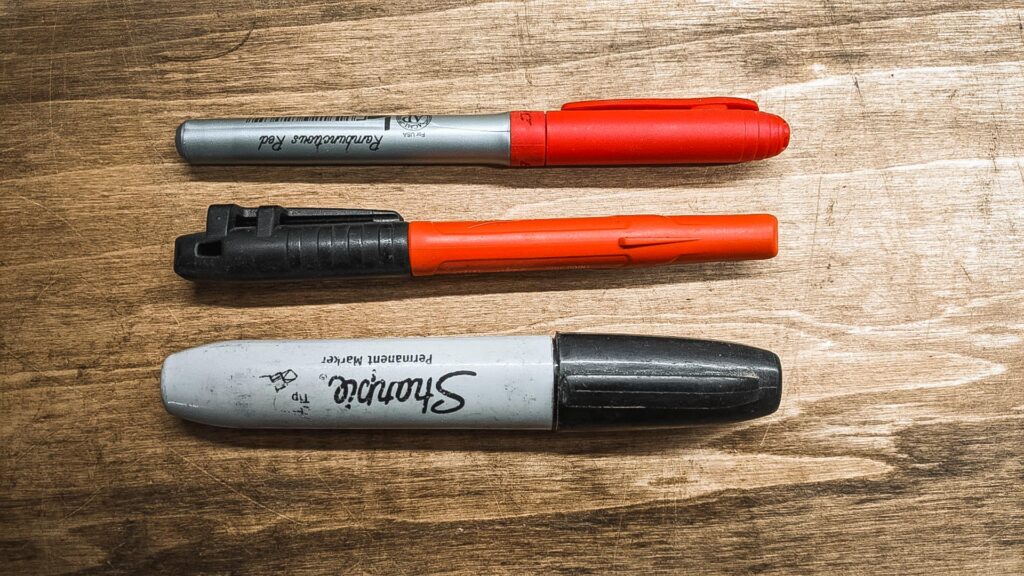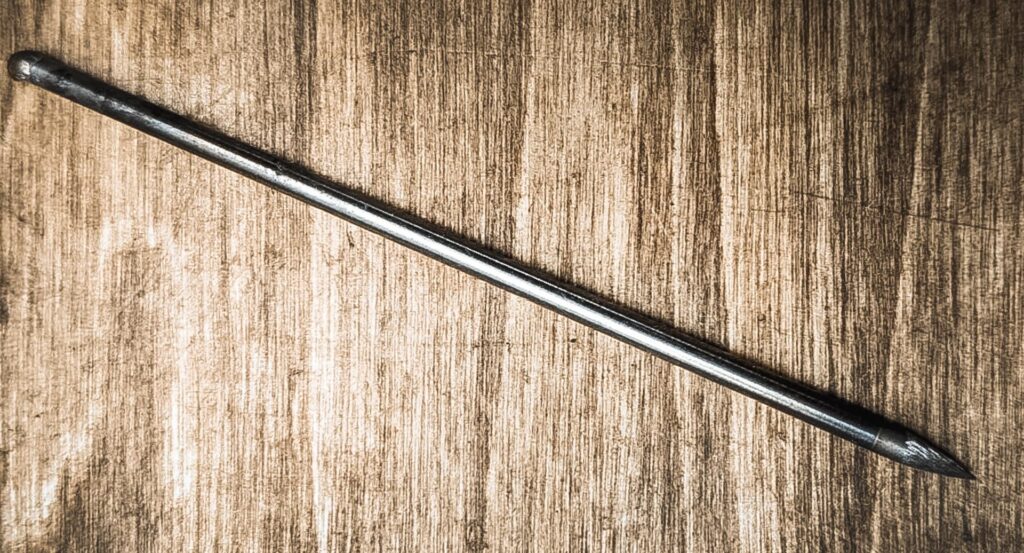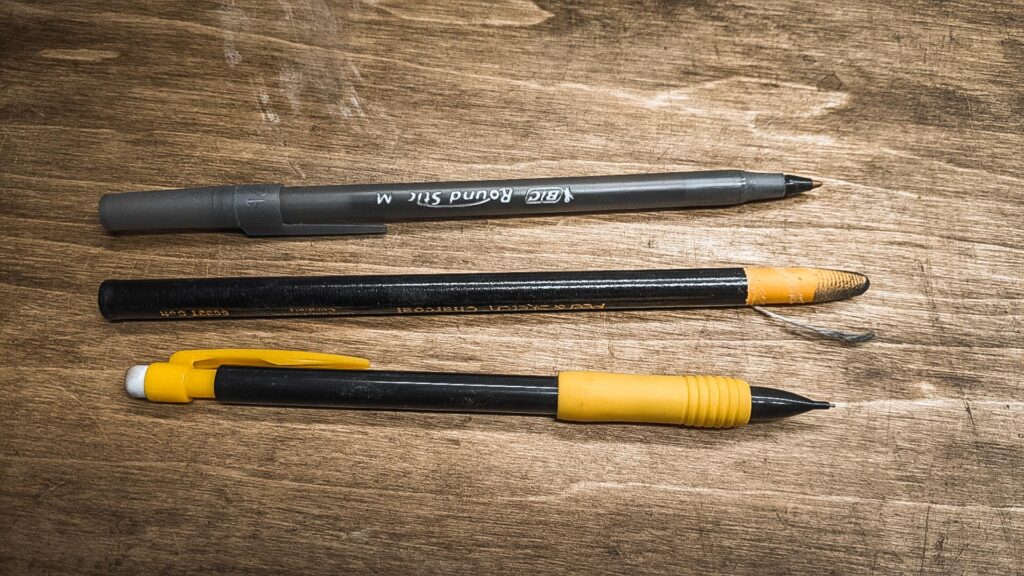Everyone knows that carpenters and woodworkers use pencils to mark wood, but what about making marks on metal? Having several metal marking tools on hand to cover a variety of situations that may arise when working with metal is important.
In this article we are going to cover metal marking tools and when to use each one.
This page contains affiliate links in which we receive a small commission at no additional cost to you. As an Amazon Associate I earn from qualifying purchases.
Permanent Markers
Permanent markers are at the top of the list when it comes to metal marking tools. The only time you will struggle with a permanent marker is on dark painted metal. I personally like Milwaukee Inkzall markers. The tips seem to be a little stronger than other markers and hold up better in a shop environment.
On new or rusty metal, a dark colored permanent marker will show up really well. Different colored markers can be used when laying out a complex project with multiple cuts and stages. Allow time for the marker to dry so it doesn’t get wiped off on accident.
For dark painted metal, you will probably need to try one of the other metal marking tools in this article, like soapstone or a scribe.

Soapstone
Soapstone may be the least known when it comes to metal marking tools, especially if you are new to metalworking or welding.
When used as a marking tool, soapstone usually comes in the form of a round or flat bar inside of a holder. Soapstone is a soft rock, and the holder keeps the piece of stone protected. Whether you choose flat or round soapstone is personal preference.

Soapstone makes a mark that is white, and feels like a cross between wax and chalk. Since it leaves white marks, soapstone works well on dark painted and rusty metal. It is worth noting that soapstone is easily removed by wiping it off.
Since soapstone is a rock (although a soft one), it can be difficult to get a good mark on extremely smooth or high gloss finishes. There needs to be a bit of texture to grab and hold the soapstone. This can be a bit of an issue when using scrap metal where you come across pieces that are painted or otherwise finished.
Because the soapstone is white, it does not show well on light colored surfaces. It is also important to remember that it is easily rubbed off. If you measure and mark a piece of metal and then need to move it before it’s cut, you may find the mark is gone if you aren’t careful.
For these reasons, soapstone is one of my least used metal marking tools, although there are situations where it is handy.
Scribe
Out of all the metal marking tools in my shop, a scribe is the second most used after permanent markers.
A scribe is a small piece of hardened metal with a sharp point at the end. It makes marks on metal and other materials by leaving a light scratch in it.

While there are scribes that are commercially available, it is pretty simple to make your own if you choose to do so. The one I use is just a sharpened piece of tungsten welding electrode. Tungsten is harder than steel, and takes a point well on a bench grinder. If DIY scribe is hard to hold, you can make a handle for it to make it more comfortable.
The largest benefit to using a scribe is that the mark it leaves is truly permanent. This can also be its biggest downside as well if you aren’t careful when making your marks. Scribes work well on painted and rusty metal, as the metal exposed by the scratch will be shiny and new. It can be slightly difficult to see the scratch on new metals.
If you need to move your workpieces around in your shop before you can make your cuts or welds, a scribe may be one of the best metal marking tools to add to your tool box.
Pens and Pencils

This may be a no brainer, but pens and pencils can be used as metal marking tools in a pinch.
Pencils are pretty straight forward, and the obvious choice for woodworkers. Even when working with, metal I have a mechanical pencil within arms reach. It will leave a mark on bare and rusty metal just fine. The only thing a pencil really doesn’t work on is glossy painted metal. It can also be difficult to see on certain finishes, as well as bare metal.
Charcoal pencils leave a dark bold line on anything with a bit of texture to it. IT can be as easy to see as a black permanent marker. Keep in mind that the charcoal can be rubbed off accidentally. They are not good for smooth surfaces or dark finishes. Charcoal pencils can be a bit messy as well.
Pens may not be the first choice as metal marking tools, but a regular ball point pan can mark some surfaces. Once again, the finish will determine how well it will work and show up on the work piece.
Final Thoughts
There are certainly plenty of options when it comes to metal marking tools. Since all of these choices are fairly inexpensive, it is worth have several marking tools around the shop. There is no one size fits all marking tool, and a lot of the choice comes down to personal preference. At a minimum, I would have some permanent markers and a scribe handy for welding and metalworking. Those two seem to be what I reach for the most in my shop.
